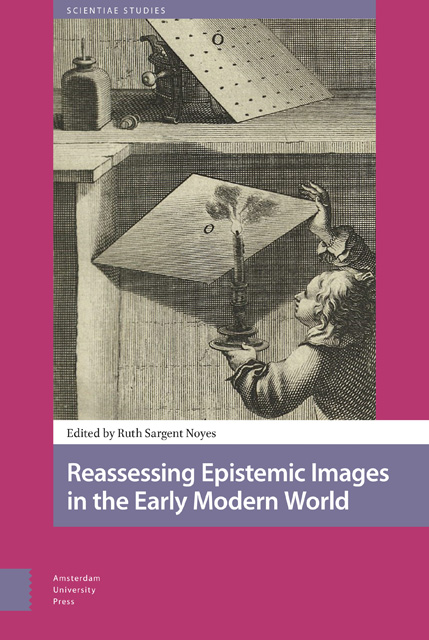Book contents
- Frontmatter
- Dedication
- Table of Contents
- 1 Prologue: For a Metaphorology of Engraving: From Epistemic Images to an Imaged Epistemology
- 2 Introduction: Pittura filosofica: Etching Galileo’s Sunspots and the Discursive Field of Early Modern Epistemic Images
- Part 1 Approaches to Print Matrices
- Part 2 Imprints as Instruments
- Part 3 Imprint, Knowledge, and Affect
- Bibliography
- Index
8 - Visual Tools and Searchable Science in Early Modern Books
Published online by Cambridge University Press: 15 June 2023
- Frontmatter
- Dedication
- Table of Contents
- 1 Prologue: For a Metaphorology of Engraving: From Epistemic Images to an Imaged Epistemology
- 2 Introduction: Pittura filosofica: Etching Galileo’s Sunspots and the Discursive Field of Early Modern Epistemic Images
- Part 1 Approaches to Print Matrices
- Part 2 Imprints as Instruments
- Part 3 Imprint, Knowledge, and Affect
- Bibliography
- Index
Summary
Abstract
This chapter investigates visual tools in sixteenth-century manuscripts and early printed books. By presenting data in useable and searchable formats, printers of short, pithy vernacular pamphlets effectively rewired the emphasis of older genres. This trajectory by which ancient knowledge domains became how-to data can perhaps best be tracked in the Liber Quodlibetarius, a codex produced in southwestern Germany c. 1524, which curiously imported images from a variety of printed genres into a hand-produced manuscript form. The sovereignty of images derived from cosmography, hippiatria, chiromancy, and metoscopy can provide important clues about their reception as data, namely, how those genres were cross-referenced, collected, and shaped up for a new visually attentive vernacular viewer.
Keywords: visual tools, Liber Quodlibetarius, chiromancy, early prints, knowledge transfer, technical literature
Introduction
The sixteenth-century press codified disciplines of knowledge by distilling available information into visual tools. By presenting data in useful and easily legible formats, printmakers rewired the emphasis of older genres such as the Book of Secrets and repackaged those secrets in printed editions of the more marketable genres of complexion literature, physiognomy, and cosmography. While scholars of early modern prints are usually eager to search for prints’ agency in the technologizing of the image, or in the prompting of the collective viewing practices that underwrote emerging scientific consensus, a look at prints’ intersection with manuscript culture proves a fruitful route to uncovering a path to early modern data development. The trajectory by which ancient knowledge domains became how-to skills can perhaps best be tracked in a manuscript likely assembled in Passau, c. 1524. The so-called Liber Quodlibetarius, which seamlessly imported images from a variety of printed genres, forms the focus of this chapter. The manuscript’s compiler merged information from books in the humanistic tradition, such as cosmography and chiromancy, with pamphlets advertising designs for bridle bits of horses, tools for field surgery, and artists’ manuals, on the strength of their visual kinship and the degree to which images were critical messengers of the books’ program. In transposing the images from these printed books, the manuscript aimed to make that data more useful to the reader by deputizing images to stand in for text-based knowledge.
- Type
- Chapter
- Information
- Reassessing Epistemic Images in the Early Modern World , pp. 175 - 198Publisher: Amsterdam University PressPrint publication year: 2022



